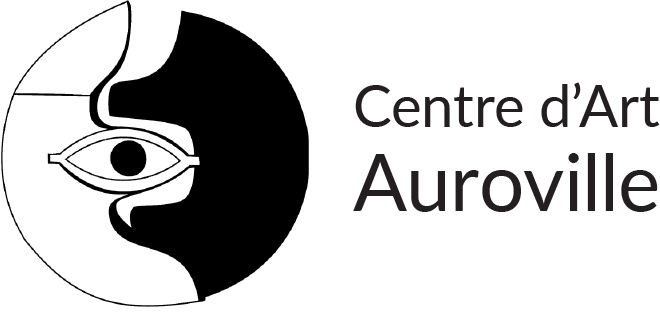By V5 painters
Ezhilarasan, Vengatesh, Danasegar and Sridhar
11th to 28th January 2020

A title that is both a declaration of intent and a challenge. Is there, indeed, a more extreme mission for a visual artist than going to question the void?
What interests the artists of V5 is to capture the messages of the invisible. To become the vectors of a world to which we no have access, rarefying in their work the elements of distraction and uncovering latent mysteries beneath the surface of things. Emptiness is a new stage in this journey. A real journey for Ezhilarasan and Vengatesh, who tirelessly return to the places they are fascinated by, respectively the Himalayas and Varanasi. It is a metaphorical journey with shifts of consciousness for Danasegar and Sridhar.
Danasegar decides to empty himself and go deep within, letting his hand trace signs on the surface of the canvas that he refuses to control. “I feel like the madman”, he says. “No one knows what’s going on in the mind of a crazy person. I become the water flowing through the pebbles, I become the line, I am freed from my own existence”. What happened in that precise moment – a moment of pure bliss – and what he gathered deeply inside, will forever remain inexplicable. But the traces will remain, the patterns he drew as though he was scratching a wall.
Emptiness has always aroused ambivalent feelings among the artists, an irresistible attraction accompanied by fear: the temptation to get lost in it, and the fear of discovering within oneself the proof of his non-existence.
Each artist bears inside a wealth of knowledge, memories and sensory experiences which are essential to his artistic evolution. But sooner or later, freed from the bonds of the past, the artist feels the need to get rid of that baggage and to reach into new, unexplored regions.
The unknown of Sridhar is a buried memory. His father was an artist, and from the temple of his childhood he kept memories of marvels and an absolute devotion for the masterpieces he could admire throughout India, and make his own – the sculptures, the bas reliefs, the Ellora and Ajanta frescoes. Later, he blurred the tracks, pretending to forget this prodigiously ancient world whose echoes continue to filter through his porous-looking stratigraphies, like those of a mural. What Sridhar paints, he considers as a separate entity from which he learns. He listens to the universe, he is the recipient of lost secrets, of forgotten passages.
As for Ezhilarasan, what he communicates is suggested by barely sketched silhouettes of men and dogs in a vacuum with the fragrance of snow.
Dogs, like sentries, come out at night. They spontaneously defend men against invisible dangers that only they perceive. They are everywhere: they wander along the roads, they bark at cars, they die knocked down in accidents, they make dreams and howl at the moon.
“Dogs are not scared because, unlike us, they have not lost their connection with nature”, says Ezhilarasan. “They are the link, the power that we have lost. They stand guard at the gates of the invisible; they search for and sense unknown creatures”.
While Ezhilarasan erases, Vengatesh reveals.
In Vengatesh‘s work, Varanasi is an archetype. He created a twilight universe where deities imbued with blue light appear and disappear as on frescoes, in successive planes. It is a dreamlike fable crossed by blinding lightnings, which presents on the same plane the shade and the light, the known and the unknown, the hidden and the revealed, the nothing and the whole. The void is the hidden side of the full, like in a card game in the hands of a supreme illusionist.
The common thread that connects the four artists from Pondicherry, the underground river where their journeys meet, may be found in the sculptures of Ezhilarasan, a group of small studies of human beings caught in the familiar positions of common daily life, which the artist calls the nine planets. “Because”, he says, “like the planets, they revolve around the sun but do not meet each other”.
Each one represents, in his own specificity, an aspect of the non-fragmented being that we are in reality, albeit not reminiscent of. We believe we are lost, but if we could bring all the fragments together, we could restore the original fullness.
Dominique Jacques, December 2019
